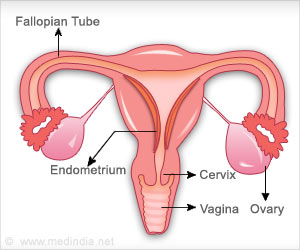Researchers from Cornell University have identified a likely origin of epithelial ovarian cancer.

Some epithelial cancers are known to occur in transitional zones between two types of epithelium (layers of tissue that line the body and organs and form glands), while others originate in epithelial tissue stem cells. All organs have the capacity for regeneration, which is done by adult stem cells located in areas of each organ called stem cell niches.
With this knowledge, the researchers discovered a novel stem cell niche for the ovarian surface epithelium in mice and showed that ovarian carcinoma preferentially originates from stem cells found in that niche, according to the study published March 6 in the journal Nature. This stem cell niche lies in a transitional area known as the hilum region, a layer of cells that links the ovary to the rest of the body.
"We now know where these cells are located in mice, so we can look in humans in those areas," said Alexander Nikitin, professor of pathology, leader of the Cornell Stem Cell Program and the paper's senior author. Andrea Flesken-Nikitin, a postdoctoral researcher in Nikitin's lab, is the paper's lead author. The findings also provide a guide for scientists to look for stem cell niches and sources of cancer in other transitional zones in other organs, Nikitin added.
The researchers proved that stem cells from the hilum region were highly prone to ovarian carcinoma, using the most current genetic research techniques.
The researchers first found that cells in the hilum region express a known marker for stem cells, called ALDH1. They then isolated ALDH1 positive cells, sequenced their genetic profiles and found many markers previously reported for stem cells in other organs.
Advertisement
Finally, the researchers microdissected ovary and hilum cells, inactivated two tumor suppressor genes p53 and Rb1, whose pathways are commonly altered in human aggressive ovarian carcinoma, and injected cells into the abdominal cavity of mice. Very few tumors developed in the mice injected with ovary cells, but almost all of the mice injected with hilum cells died after developing aggressive, metastasizing cancers that were similar to human ovarian carcinomas.
Advertisement
Source-Eurekalert













